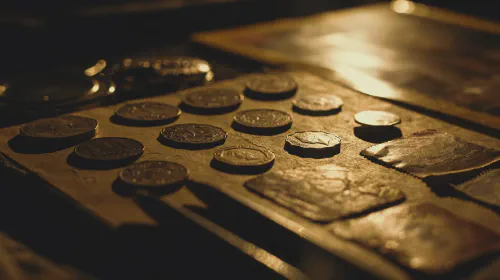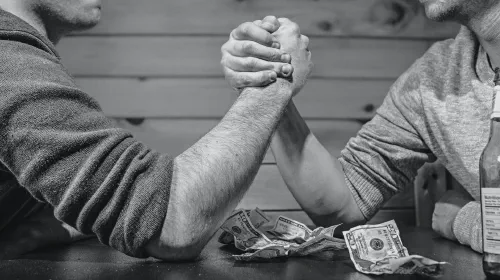XRP - How Many Are There and How Many Are Left?
Salomon Kisters
Aug 30, 2022This post may contain affiliate links. If you use these links to buy something we may earn a commission. Thanks!
With thousands of different coins in the cryptocurrency market, it becomes difficult to find good projects. With coins appearing left and right, predicting the success of a project is especially difficult. Promising projects that are performing well today may simply vanish the next day.
However, some cryptocurrencies have withstood the test of time. One such coin is XRP. XRP is a cryptocurrency developed by Ripple that operates on the XRP Ledger blockchain. What is the XRP Ledger, and how does it interact with Ripple and XRP?
The XRP Ledger
The XRP Ledger is a blockchain technology engineered by Jed McCaleb, Arthur Britto, and David Schwartz. The XRP Ledger is a decentralized, public blockchain that has a great developer community behind it.
The ideology of the founders is not to upend and replace the current financial systems but to work in sync with them. They believe that cryptocurrency should seek to work with the current financial systems instead of working against them since all new innovation rests on the shoulders of previously established frameworks.
The most significant benefit of having a public blockchain with open-source code is that anyone can contribute to it. The XRP ledger is designed to allow developers to make as demanding projects as they want without having to worry about energy efficiency since the XRP Ledger boasts of being highly energy efficient and environmentally conscious.
The XRP Ledger has been functioning for more than eight years now, with more than 63 million active ledgers. How has XRP Ledger managed to achieve this kind of success?
The History of XRP Ledger
The development of XRP Ledger was started in 2011 by McCaleb, Britto, and Schwartz. They were intrigued by the technological genius behind Bitcoin and wanted to create something that improved upon the concept of blockchain technology and cryptocurrency. They wanted to create a coin that was more sustainable and built for efficient and painless payments.
The XRP Ledger was launched in June 2012. Not much time passed until the three engineers were visited by Chris Larsen, and the group ended up starting a company by the name of NewCoin in September 2012. They shortly renamed the company to OpenCoin.
Soon after forming the company, they made the distributed ledger public. They code-named it Ripple.
The native currency of the blockchain would be XRP or, as it was then called, “Ripples.” The name Ripple took over all aspects of the company, with the unique consensus ledger being called the Ripple Consensus Ledger, the transaction protocol named Ripple Transaction Protocol, and the network called the Ripple network.
The company itself was renamed Ripple Labs in 2013.
What is XRP?
XRP is the native currency of the XRP Ledger. Since it was released as a direct competition to Bitcoin, people often draw comparisons between them.
XRP takes 3-5 seconds to settle a transaction, while it takes Bitcoin 500 seconds to settle a transaction. The cost for a transaction on XRP is $0.0002, while the cost of a transaction on Bitcoin is $0.50. XRP can handle up to 1,500 transactions per second, while Bitcoin is limited to 3 per second.
Last but not least, the carbon footprint of XRP is negligible, whereas Bitcoin is responsible for 0.3% of global energy consumption. Energy efficiency is an important issue in the world now due to the fact that we face ever-increasing pollution. We are also depleting our natural reserves of fossil fuels at a rapid pace; thus, the world needs to become energy efficient, and it needs to do it fast.
Financial institutions can use XRP for faster and more efficient payments all around the world. In this case, XRP serves as a bridge currency. People can also use XRP as a personal reference as a bridge to trade/transfer different currencies.
How Many Exchanges is XRP on?
XRP is used for working on arbitrage opportunities, servicing margin calls, and managing general trading inventory on more than a hundred markets and exchanges.
There are different types of exchanges you can trade XRP on. There are simple spot exchanges, which allow users to trade cryptocurrencies at their current market rate.
Then there are futures, options, and swap exchanges, which allow people to trade standardized contracts of cryptocurrency rates in the future. The third category is custodial exchanges, which manage the private keys of users and publish centralized order books containing information of buyers and sellers.
And lastly, we have non-custodial exchanges, which do not manage private keys and publish decentralized order books about buyers and sellers.
Here is a list of some of the top cryptocurrency exchanges (according to CoinMarketCap) on which you can trade XRP:
- Binance
- Coinbase Exchange
- FTX
- Kraken
- Binance.US
- KuCoin
- Gate.io
- Bitfinex
- Huobi Global
- bitFlyer
What Wallets Support XRP?
If you want to hold XRP securely and outside a trading platform, you need a personal cryptocurrency wallet. These digital wallets allow the user to receive, send, and safely store their cryptocurrencies.
There are two main types of wallets: software wallets and hardware wallets. Examples of software wallets that support XRP are XUMM, Trust Wallet, and GATEHUB. Software wallets are managed through apps on your phone or desktop.
Hardware wallets are a different story altogether. Ledger and TREZOR are two types that support XRP. To get a hardware wallet, you need a dedicated hard drive, SSD, or USB in which you can store your wallet.
However, hardware wallets are much less popular because you can very easily lose your wallet due to physical theft of the device and hardware failure.
How Many XRPs are out there?
Just like Bitcoin, XRP is a deflationary token. This means that there is an upper limit to the total supply of XRP to protect its value. The total supply of XRP is capped at 100 billion.
Ripple initially placed 55 billion XRP in an Escrow account. By using this value, people can easily calculate the maximum XRP that can enter the cryptocurrency market.
As of May 15th, 2022, this is how the total XRP is distributed:
- Total XRP held by Ripple: 5,591,730,904
- Total XRP distributed: 48,697,761,612
- Total XRP held in Escrow account: 45,700,000,013
Ripple and CBDCs
Ripple is pushing for its XRP Ledger technology to be used as a home for CBDCs (Central Bank Digital Currencies). According to Ripple, the process for creating, managing, and destroying CBDCs on the XRP Ledger is straightforward, easy, and efficient.
The process starts with onboarding, where the standard API integration of the CBDC into established systems takes place. Banks can use the multi-signature technology to mint new tokens of the CBDC. The issuers can then distribute the CBDCs to accounts of their choice and ensure that only people they approve can use them.
Most transactions settle in 2-3 seconds, offering cross-currency functionalities. Perhaps the most important quality is that CBDCs can be traded for fiat money instantly.
The issuers can destroy tokens whenever they want - ensuring that they have complete control over the supply of the token.
SEC Lawsuit
The future of XRP was jeopardized by a lawsuit Ripple faced in 2020. The Chief US regulator insisted that XRP comes under the category of unregistered securities, and Ripple is breaking US laws by offering unregistered securities to investors.
The lawsuit caused XRP to be delisted from major exchanges and resulted in a considerable drop in its value. However, Ripple was able to cover most of its losses by forcing the SEC to release documents in which the same rules that apply to XRP do not apply to Bitcoin, Ethereum, and other cryptocurrencies.
Ripple eventually emerged triumphant and was allowed to be listed on major exchanges again since it was obvious that Ripple was being targeted for standard practices in the cryptocurrency market.
The Future of Ripple and XRP
Ripple and XRP have a bright future ahead of them. Apart from price predictions, there is a lot of potential in the technological advancements offered by Ripple.
Ripple has a PayID feature that allows users to send and receive cryptocurrency through a secure ID, and the feature works with most major service providers. Another feature, One Pay FX, enables users with international transactions that are either instant or same day, depending on the volume and country they’re sending funds to. The entire process, including the transaction fees and the time of arrival of funds, is transparent to the user.
Although a lot of people have pinned their hopes on XRP becoming the future of international and local cashless payments, there is a lot of competition in the cryptocurrency market, with newer and more innovative blockchain technologies being launched in the market every year.
Do you think Ripple will rise above the competition and make a permanent place for itself in the cryptocurrency world? Let us know.
Stay informed with the latest insights in Crypto, Blockchain, and Cyber-Security! Subscribe to our newsletter now to receive exclusive updates, expert analyses, and current developments directly to your inbox. Don't miss the opportunity to expand your knowledge and stay up-to-date.
Love what you're reading? Subscribe for top stories in Crypto, Blockchain, and Cyber-Security. Stay informed with exclusive updates.
Please note that the Content may have been generated with the Help of AI. The editorial content of OriginStamp AG does not constitute a recommendation for investment or purchase advice. In principle, an investment can also lead to a total loss. Therefore, please seek advice before making an investment decision.

How Many Solana Coins Are There and How Many Are Left?
Solana is a new player in the blockchain market. But how many Solana Coins are there, and how many are left?

Polkadot vs. Solana: A Comprehensive Comparison of Strengths and Weaknesses
Learn about the strengths and weaknesses of Polkadot and Solana, two major players in the blockchain industry, to decide which is better suited for your needs.

Top Enterprise Blockchain Platforms
There are several types of enterprise blockchain platforms available to meet the needs of large corporations. Let's have a look at the top enterprise blockchain platforms.
Protect your documents
Your gateway to unforgeable data. Imprint the authenticity of your information with our blockchain timestamp